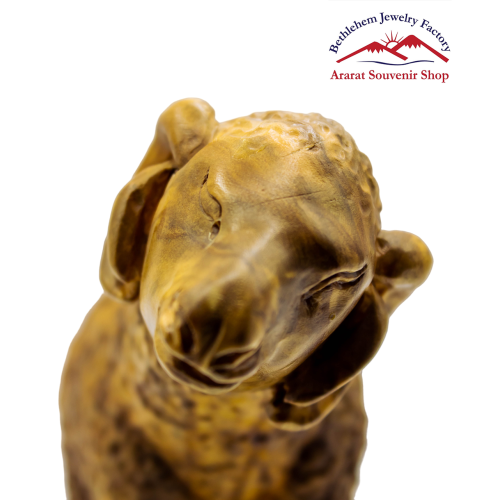Sheep
“Sheep Wood” is a term that evokes pastoral imagery and connections to nature, often symbolizing tranquility, nurturing, and the simplicity of rural life. This title might refer to an actual geographical location known for its sheep population, or it could serve as a metaphorical landscape within literature that embodies themes of innocence and pastoral beauty. The presence of sheep, often seen grazing peacefully in verdant pastures, is emblematic of harmony between nature and agricultural life, as well as the cyclical rhythms of the seasons.
In examining the concept of “Sheep Wood,” one might first consider its physical attributes. A typical sheep wood area would likely feature rolling hills, dotted with clusters of trees providing shelter and shade for grazing flocks. The lush green grass, nourished by the earth and gentle rains, offers sustenance to the sheep while enhancing the idyllic landscape. The trees, possibly oaks, willows, or maples, would offer not only shade but also a habitat for various birds and wildlife, creating a diverse ecosystem where flora and fauna thrive together.
Sheep, as creatures, are often associated with pastoral themes of simplicity and innocence. Their gentle bleating and soft wool create an image of calm and tranquility, contrasting with the busyness of urban life. In literature and art, sheep symbolize purity and humility, often used as metaphors for unblemished innocence. The image of a shepherd tending to sheep reinforces this theme, suggesting care, guardianship, and a connection to the elemental aspects of life. The shepherd’s role embodies a nurturing spirit, guiding the flock with patience and insight, akin to the virtues of leadership and responsibility seen in many cultures.
The ritual of sheep farming lends itself to deeper contemplation on sustainable agriculture and animal husbandry practices. In a Sheep Wood setting, the relationship between farmers and their sheep reveals a symbiotic balance, highlighting practices that respect the land and its resources. Proper grazing techniques are vital; rotational grazing, where sheep are moved between pastures, promotes soil health and prevents overgrazing, ensuring that the land remains fertile for generations to come. This sustainable approach reflects a broader environmental consciousness, advocating for agricultural methods that contribute positively to the ecosystem.
Moreover, the notion of Sheep Wood can have profound cultural and spiritual significances, with sheep often featured in religious texts and traditions. In Christianity, for example, Jesus is referred to as the “Good Shepherd,” emphasizing themes of protection, guidance, and sacrifice for the well-being of followers. The image of the shepherd leading his sheep can symbolize divine care and the importance of community in nurturing spiritual growth. In this context, Sheep Wood could serve as a metaphor for a sacred space where individuals can seek refuge and a deeper connection to their faith.
Sheep Wood can also find resonance in the realm of creativity, inspiring artists and writers alike. Poets, for instance, have often drawn upon the imagery of pastoral lands to explore themes of nostalgia, reflection, and the pursuit of simple joys. The sight of sheep grazing peacefully may evoke memories of childhood or a longing for simpler times, resonating deeply within the collective human experience. Artists may find inspiration in the play of light and shadow among trees, the gentle movement of sheep across the landscape, and the ever-changing colors of the seasons.
As society increasingly moves toward urbanization, the concept of Sheep Wood can represent a counter-narrative to the frenetic pace of modern life. It serves as a reminder of the beauty and importance of nature and the need to preserve green spaces for future generations. In recent years, there has been a resurgence of interest in sustainable living and eco-friendly practices. Urbanites seek out rural experiences, from agritourism to farm-to-table dining, rekindling their connection with the land and the origins of their food.
Lastly, Sheep Wood embodies a deeper connection to community and celebration. Many rural traditions involve gathering for sheep shearing festivals, where locals come together to celebrate the seasonal rhythms and communal bonds formed over the shared labor of farming. These events not only highlight agricultural practices but also reinforce the social fabric, creating a sense of belonging among participants. They serve as an annual reminder of the cyclical nature of life, celebrating both the hardships and joys that accompany the farming journey.
In conclusion, “Sheep Wood” symbolizes a harmonious integration of nature, culture, and community. Whether viewed as a literal landscape or a metaphorical representation, it encapsulates themes of simplicity, pastoral beauty, and the deep connections that exist between humans and the land. The sheep, embodying innocence and tranquility, serve as a reminder of the importance of sustainable practices and nurturing relationships within rural life. In our increasingly urbanized world, the concept of Sheep Wood resonates as a poignant call to reconnect with nature, acknowledge our roots, and celebrate the enduring bonds formed within communities. This pastoral imagery encourages appreciation for the simple joys and timelessness of rural life, fostering a deeper understanding of our interconnectedness with the environment and one another.











Reviews
There are no reviews yet.